Kindergarten
I ask the class to do a notice and wonder with this image.
We agree on which end is the front of the line and which is the back. Then I ask, “Where is Carmen in line?”
A few students quickly say she’s 3rd. But one student says Carmen is 2nd, so I ask her to come up and explain. She tells us she counted from the back of the line. Perfect. So we summarize: there are 4 people in line, and Carmen is 3rd from the front and 2nd from the back.
Then I toss them this question from Amplify Desmos Math’s Counting Teen Numbers, a K.6 Sub-Unit 1 Extension:
Jada is standing in line at the cafeteria. She is 6th in line if you count from the beginning and 9th in line if you count from the end. How many people are in the line?
They had a tough time with this. Many students say there are 15 people—clearly getting that from just adding 6 and 9.
So we go back to the original line of 4 students. I remind them that if we add 3 and 2, we get 5, but there are only 4 kids. Then we mark off the Jada problem on the board together and find there are actually 14 students in line—not 15. I give them another example:
Davanta is 11th from the front and 7th from the back. How many students in line?
They go right back to adding 11 and 7 to say 18.
If we have more time, I want them to act it out—stand in line and count off. I think we hit a wall with this problem, and it’s best to leave it for now. I actually love when students get stuck—something about it makes me think harder about teaching and their developmental progress. The teacher says she’ll continue working on it with them.
Next, I read a story from Amplify Desmos Math’s K.7 Unit: Everybody Needs Help Sometimes. They listen intently, eyes glued to the screen.
I use the story to launch Lesson 10: Tall Towers. I don’t have the intended shapes, only linking cubes, so I change the task:
Rivers (the main character in the story) wants to build towers from these 10 linking cubes. But to make them more interesting, he only wants to build towers of different heights. And yes, we’re only building up, not across.
They record the different combinations on their papers. A few groups choose to sketch out the towers. I love that one student (bottom left) grabs the Rekenrek on his own to use. The goal is to record the different sets of towers and be able to answer:
“How do you know you’ve built them all?”
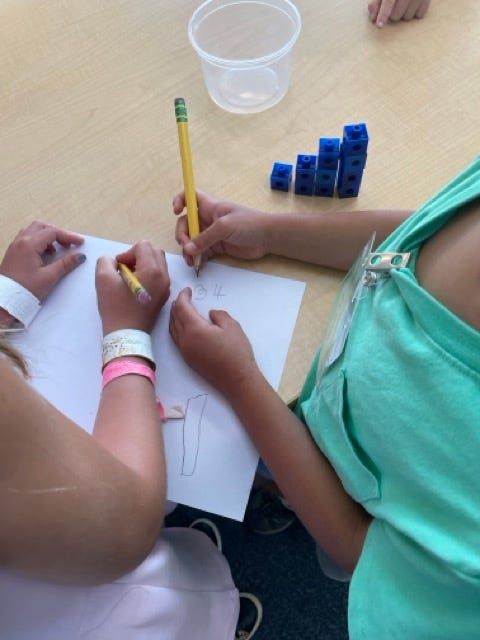
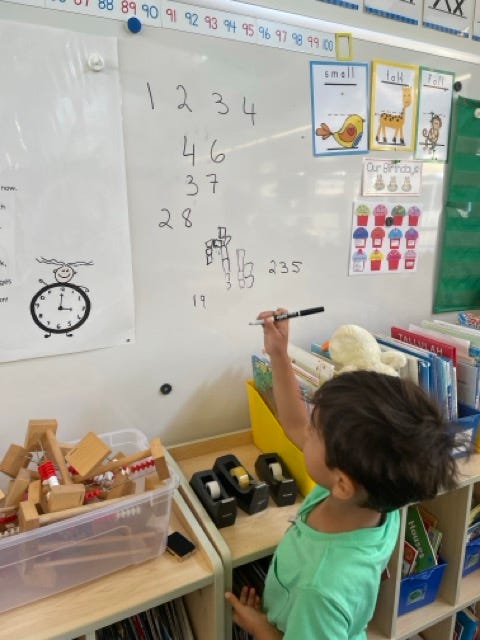
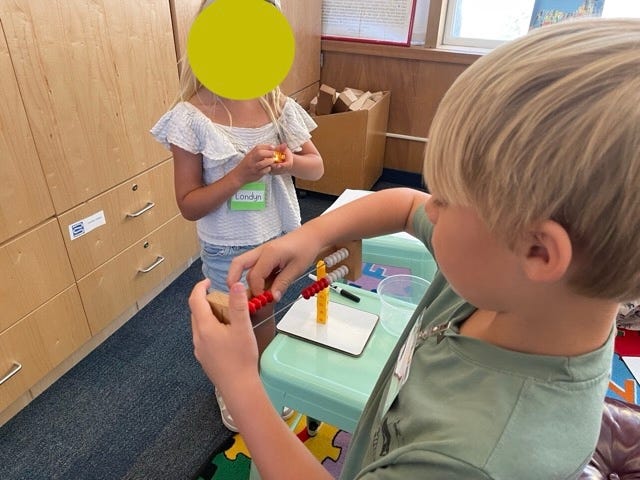
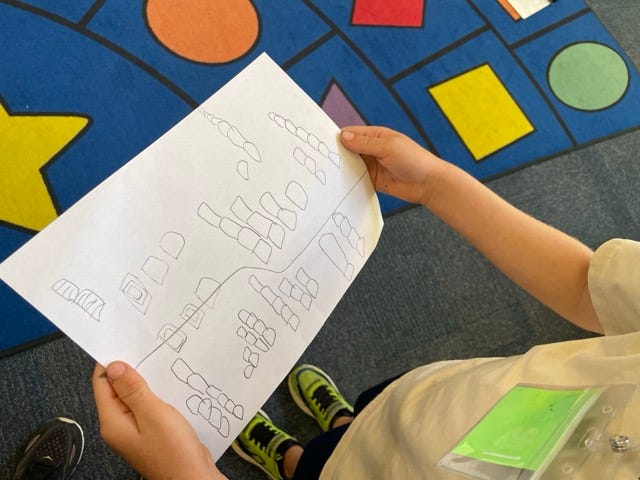
I hear the teacher say more than once, “These are great questions!” I nod and smile. “Your kids are amazing.” And they really are.






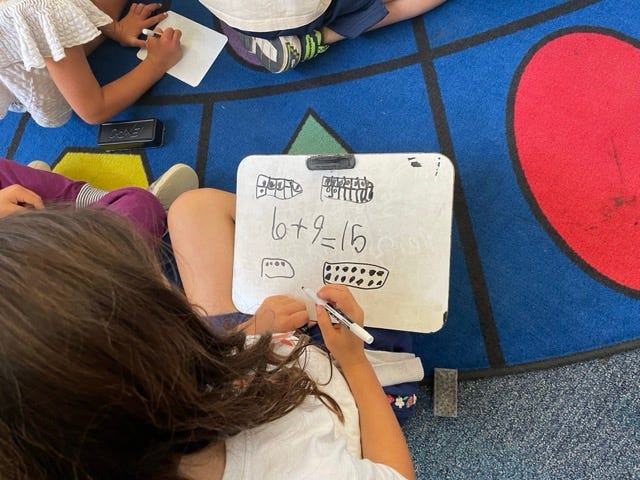

"I think we hit a wall with this problem, and it’s best to leave it for now. I actually love when students get stuck—something about it makes me think harder about teaching and their developmental progress". Fawn Nguyen is such a gift to students and teachers of all ages. Thank you from coming over to Substack.